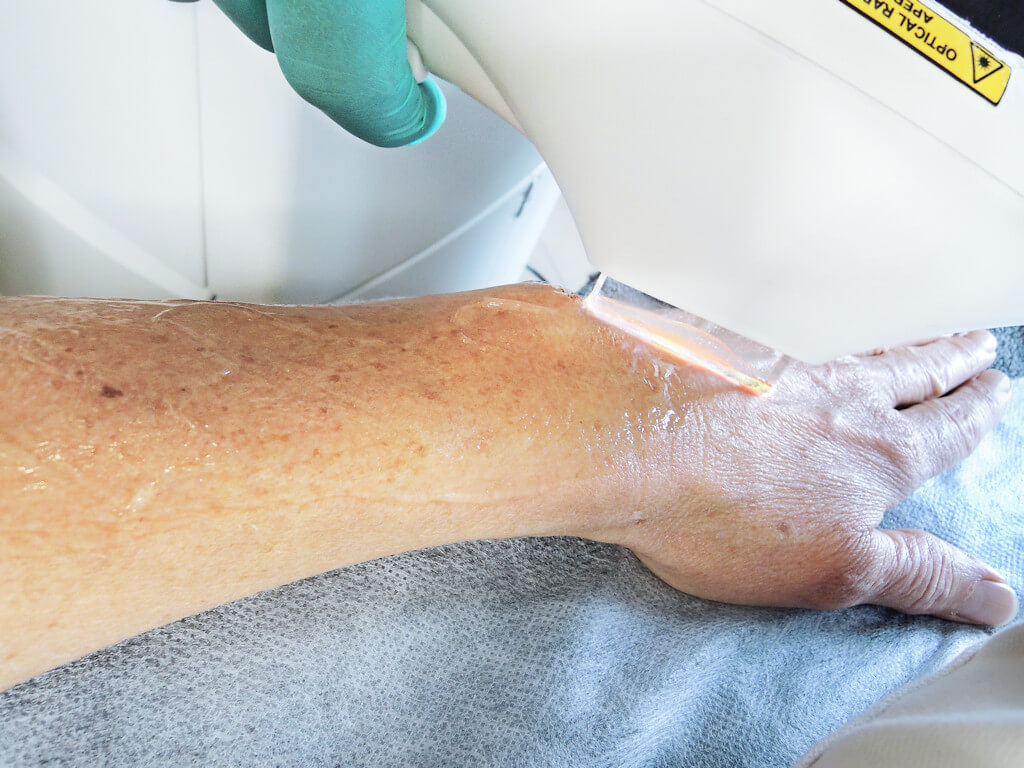Spots
Hyperpigmentation refers to an overproduction of melanin in the epidermis. This manifests itself in small to medium-sized dark spots that can have many causes such as sun damage, hormones (pregnancy), inflammation (acne) or genetics (freckles). We can fade these spots, not by harming the skin, but by applying appropriate rejuvenation techniques, each of which has its own influence on melanin.Pulsed Light
During IPL treatment we apply flashes of pulsed light to the skin in specific wavelengths that are absorbed by the darker, more pigmented spots, but not by the lighter surrounding skin. This will cause melanin to burn up in the cells, causing the excess pigment to be broken down deep in the dermis. We then use an acid peel to smoothen the top layer of the skin, accelerating the cell division process, causing the pigment to reduce more quickly.
Energist VPL Ultra Plus Cerepharma Peelings 
Microneedling
UV damage does not heal on its own like a wound does. But thanks to Microneedling we can stimulate the body to generate new skin. By puncturing small channels in the pigment cells, we ensure that the new skin layer is less discolored. The melanin is broken into small pieces and can then slide up and peel more easily. Irradiation with LED light calms overactive melanocytes, which increases resistance to UV light to help prevent future pigment spots.
Dr.Pen Microneedling Dermalux Flex LED
Aftercare
An even tone is a core aspect of youthful-looking skin. Hyperpigmentation is difficult to treat as spots in the skin can be very stubborn. Multiple treatment sessions are required in accordance with meticulous home care in order to achieve optimal and lasting results. Good continuous protection against sun rays is therefore crucial to allow these techniques to achieve their full effectiveness and to maintain their full effectiveness. 
